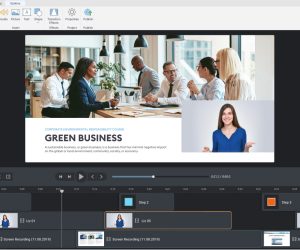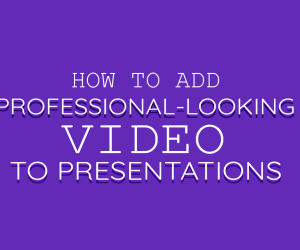We all have fallen victim to snooze fest presentations from being a student to a working employee, and sometimes we are the culprits of these eye-gouging and yawn-inducing presentations. We succumb to good enough and wishy-washy presentations, which resulted from some of these common pitfalls in our presentations.
Common Presentation Mistakes and Failures
Being Self-Centered and not Audience-Centered
Most of the time, the focus of speakers is what they want to tell the audience and what is on their agenda. They forget the most important thing which is the audience and their needs and benefits. It is time to transition from informing the audience to influencing them.
Lack of Preparation and Practice
Speakers deliver and present in front of the crowd without practicing their presentations over again. This is a recipe for disaster, it is a trap that the speaker sets himself or herself up. A lot of famous inspiring speakers give their speeches and presentations with seamless efforts, but their only secret is days to weeks of preparation and practice.
Designing and Using Ineffective Visuals
There is nothing more annoying than seeing poor slides or visual aids. We have discussed presentations are visuals designed to help the speaker get the message across to the listeners. It should not complicate or confuse the audience, thus spending ample time to design and develop the presentation is the key to an impactful presentation.
Presentations and Storytelling
Presentations have been around for a long time, even way back during the earliest time of humanity. The early human race shared and passed on their personal experiences and life journeys through cave paintings. Hence, historians and scientists have been learning the bygone cultures with the use of these ancient presentations. Similarly, storytelling is the oldest way to present a message or to explain and deliver it to the world. Ancient people used storytelling like the Bible uses storytelling, your grandparents use storytelling. It is the oldest and yet one of the most effective approaches in getting your message across.
First, the definition of presentation is a visual tool designed and used to help a person in telling a story. As humankind evolved, so did our ways in presentations. People leveraged the use of technology and the development of several presentation tools transpired. Chalkboards and whiteboards became the most used presentations tool that lasted for over 100 years, which then followed by flip charts and digital presentations. More than three decades ago, PowerPoint emerged as one of the preferred ways to deliver your presentations, however today there are many other presentation tools available (such as Google Slides) that can be used to deliver your presentation effectively. Furthermore, presentation skills such as being a good story teller is one of the killer skills a presenter can have.
Designing presentations and delivering stories have varying purposes, these include educational, entertainment, and even business transactions. While you create your presentations, you must already know the goal or purpose of it. Are you going to educate, entertain, report data, or negotiate with our audience? There are several purposes of presentations and you need to know right off the bat what you hope for your audience to take with them. Also, having a definite aim can lead to the right design and approach for your presentation.
Powerful and Engaging Openings
The opening builds the first impression and sets the mood of the audience. This is the time in your presentation when you will have the most of your audience’s attention and within a minute that attention span gradually erodes. When you have that small window of opportunity to grab your audience’s attention, you make the most out of it. The opening provides an opportunity to set the stage for the key idea you will be teaching. During the opening is when you set the tone for any presentation and capture the attention and interest of your audience. There are myriad approaches to how to start a presentation with a bang.
Start with a Question
Arouse curiosity in your audience by asking intriguing questions that will make them think and stimulate their brains. At the very beginning, tease and hook them with your questions related to the topic you are going to discuss. Your goal with throwing the question out in the open is for the audience to follow through until the end of your discussion so they can find out the answer to that question. For example: “What do you think came first, chicken or egg?” People will start thinking about it. They would have their answers, and they would be engaged during and until the end of the discussion. For sure, they would listen intently throughout your presentation so they can validate their answers and opinions to your question.
Ask a Relatable Question (by a show of hands)
Another variety of asking a question is by show of hands. There is nothing more engaging than a question and topic that are relatable, thus, try asking questions that people had experienced. The goal is to connect with more people right from the jumpstart. For example,
“How many of you have ever experienced mental block and stage frights during a speech?”
Advertisement
Try to build rapport and connection to your audience right at the beginning as your first impression so you can engage them by being empathetic. For them to know you have the same experiences and similarities, they will be more comfortable engaging during the discussion of your presentation.
Share a Startling Statistic
Start by sharing a startling statistic that you can link to your audience or people for a larger impact and emotions. For example: “Over 800 children under 5 years old die from diarrhea attributed to poor water and sanitation every day.” You can also combine giving statistics and asking a leading question together. For example: “How many of you know that the 844 million people lack basic drinking water access all over the globe?” It will give you a pulse on the awareness of your audience on the topic, and it will surprise some who are clueless. However, there’s a chance of losing your audience if you go overboard with statistics or overdoing it with complicated data. Be mindful.
Use Analogy
There is the power of persuasion behind using an analogy in communication and starting with it is making a powerful statement. When you use an analogy, you show how two things are alike by pointing out their shared characteristics. For example: “Life is like an ice cream, enjoy it before it melts.” The goal is to show the audience that if two things are similar in some ways, they are identical in other ways too.
Share Your Personal Story or Experience
People get excited with stories, especially personal stories and experiences. This approach will help you and your audience settle together. You are setting the tone and mood of everyone like a casual conversation where people can relate to your stories. For example:
“I adopted a stray and frail-looking puppy, I found it lost and neglected beside a sidewalk. I fixed him up, named him Sebastian, and today he is the most energetic and most playful dog you will ever encounter.”
There is nothing more dramatic and intriguing than storytelling. The secret of keeping your audience’s attention glued to your presentation and speech is through storytelling.
In summary, the most important thing is keeping your audience the focus of your presentation and storytelling. Keep in mind that the show is not about you but your listeners- engage with them from time to time, do not be afraid of trying out new things with your audience, but avoid at all cost doing a monologue throughout your presentation. Most importantly, do not put your audience to sleep.



